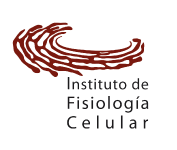By combining the powers of Affinity Labeling and Immunoprecipitation (AFLIP), a technique for the detection of low abundance receptors in zebrafish embryos has been implemented. This technique takes advantage of the selectivity and sensitivity conferred by affinity labeling of a given receptor by its ligand with the specificity of the immunoprecipitation. We have used AFLIP to detect the type III TGF-β receptor (TGFBR3), also know as betaglycan, during early zebrafish development. AFLIP was instrumental in validating the efficacy of a TGFBR3 morphant zebrafish phenotype. In the first step, embryo protein extracts are prepared and used to generate (125)I-TGF-β2-TGFBR3 complexes that are purified by immunoprecipitation. Later, these complexes are covalently cross-linked and revealed using SDS-PAGE separation and autoradiography detection. This technique requires the availability of a labeled ligand for, and a specific antibody against, the receptor to be detected, and shall be easily adapted to identify any growth factor or cytokine receptor that meets these requirements.
ABSTRACT




